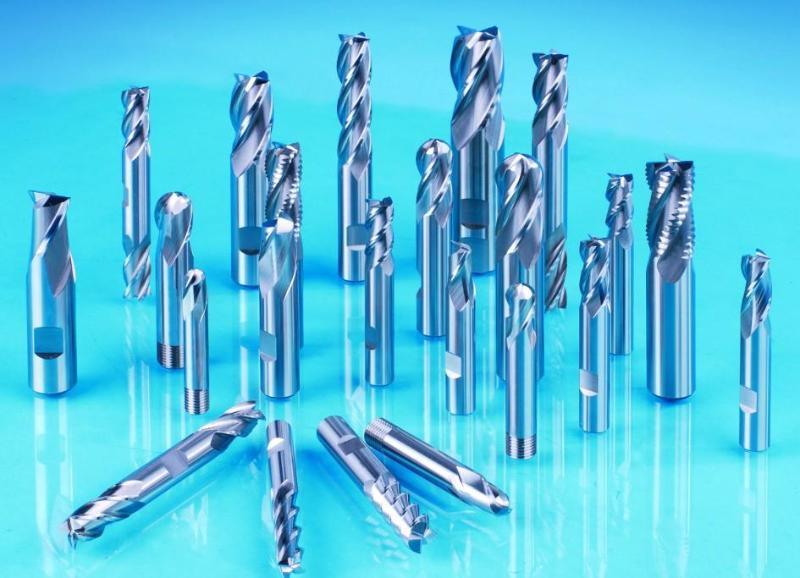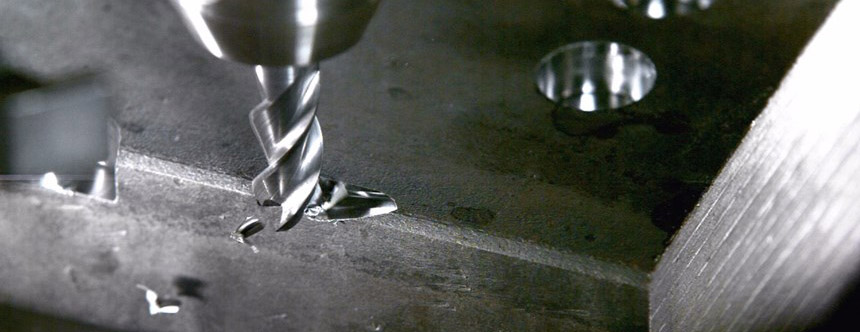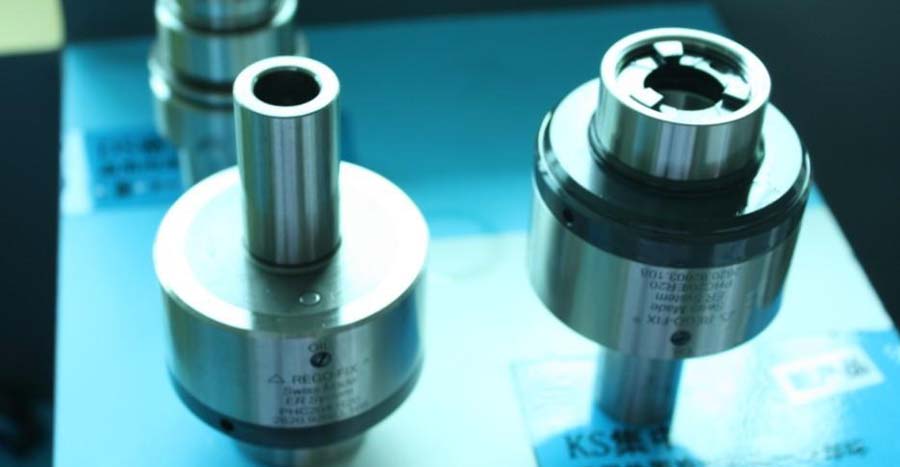Tool Broken
The Performance Of Tool Breakage
1) The cutting edge chipped slightly
When the workpiece material structure, hardness, and margin are uneven, the rake angle is too large and the cutting edge strength is low, the process system is not rigid enough to cause vibration, or when the cutting is interrupted and the grinding quality is poor, the cutting edge is prone to chipping. That is, tiny avalanches, nicks or flaking appear in the blade area. After this happens, the tool will lose part of its cutting ability, but it can continue to work. When cutting continues, the damaged part of the blade area may rapidly expand, resulting in greater damage.
2) Chipping of cutting edge or tip
This type of damage often occurs under cutting conditions that are more severe than those that cause chipping of the cutting edge, or is a further development of chipping. The size and scope of the collapse are larger than that of the micro collapse, so that the tool completely loses the cutting ability and has to stop working. The broken tip of a knife is often referred to as tip drop.
3) Broken blade or tool
When the cutting conditions are extremely bad, the cutting amount is too large, there is an impact load, there are microcracks in the blade or tool material, due to the residual stress in the blade due to welding, sharpening, and factors such as careless operation, the blade or tool may be caused It breaks. After this type of damage occurs, the tool can no longer be used, resulting in scrap.
4) The surface of the blade peels off
For brittle materials, such as cemented carbide, ceramics, PCBN, etc. with high TiC content, there are residual stresses in the surface due to defects or potential cracks in the surface structure, or due to welding or sharpening. It is easy to peel off when the tool surface is not stable enough or the tool surface is subjected to alternating contact stress. Spalling may occur on the rake surface, the knife may occur on the flank surface, the peeling material is in the form of flakes, and the peeling area is large. The coating tool is more likely to peel off. After the blade is slightly peeled, it can continue to work, and the cutting ability will be lost after severe peeling.

5) Plastic deformation of the cutting part
Due to low strength and low hardness of steel and high-speed steel, plastic deformation may occur in the cutting part. When the cemented carbide works under high temperature and three-directional compressive stress, it will also produce surface plastic flow, and even cause the cutting edge or the tip of the tool to undergo plastic deformation and cause collapse. Collapse generally occurs when the cutting amount is large and hard materials are processed. The modulus of elasticity of TiC-based cemented carbide is smaller than that of WC-based cemented carbide, so the former’s resistance to plastic deformation is accelerated or fails quickly. PCD and PCBN basically do not undergo plastic deformation.
6) Hot cracking of the blade
When the tool is subjected to alternating mechanical load and thermal load, the surface of the cutting part will inevitably produce alternating thermal stress due to repeated thermal expansion and contraction, which will cause the blade to fatigue and crack. For example, when a cemented carbide milling cutter performs high-speed milling, the cutter teeth are constantly subjected to periodic impact and alternating thermal stress, and comb-shaped cracks are generated on the rake face. Although some tools do not have obvious alternating loads and alternating stresses, thermal stress will also be generated due to the inconsistency of the surface and inner temperature. In addition, there are inevitably defects in the tool material, so the blade may also crack. After the crack is formed, the tool can sometimes continue to work for a period of time, and sometimes the rapid growth of the crack causes the blade to break or the blade face to peel off seriously.
How To Prevent Tool Breakage
1) According to the characteristics of the processed materials and parts, select various types and grades of tool materials reasonably. On the premise of a certain degree of hardness and wear resistance, the tool material must be guaranteed to have the necessary toughness.
2) Reasonably choose the geometric parameters of the tool. By adjusting the front and rear angles, main and auxiliary deflection angles, blade inclination angles, etc., to ensure that the cutting edge and the tip have good strength. Grinding a negative chamfer on the cutting edge is an effective measure to prevent tool collapse.
3) Ensure the quality of welding and sharpening, and avoid various defects caused by improper welding and sharpening. The cutting tool used in the key process should be ground to improve the surface quality and check for cracks.
4) Choose the cutting amount reasonably to avoid excessive cutting force and high cutting temperature to prevent tool damage.
5) As far as possible, ensure that the process system has better rigidity and reduce vibration.
6) Take the correct operation method, try to make the tool not bear or bear the sudden load as little as possible.

Tool Wear
The causes of wear can be divided into:
1) Abrasive wear
There are often tiny particles with extremely high hardness in the processed material, which can draw grooves on the surface of the tool, which is the abrasive wear. Abrasive wear exists on all sides, and the rake face is the most obvious. Moreover, hemp wear can occur at various cutting speeds, but for low-speed cutting, due to the lower cutting temperature, the wear caused by other reasons is not obvious, so abrasive wear is the main reason. In addition, the lower the hardness of the tool, the more serious the abrasive wear.
2) Cold welding wear
When cutting, there is a lot of pressure and strong friction between the workpiece, the cutting and the front and rear faces, so cold welding will occur. Due to the relative movement between the friction pairs, the cold welding will produce cracks and be taken away by one side, resulting in cold welding wear. Cold welding wear is generally more serious at moderate cutting speeds. According to experiments, brittle metals are stronger than plastic metals in cold welding resistance; multiphase metals are smaller than unidirectional metals; metal compounds have a lower tendency to cold welding than simple substances; and the B group elements in the periodic table of chemical elements have a lower tendency to cold welding with iron. Cold welding of high-speed steel and cemented carbide is more serious during low-speed cutting.
3) Diffusion wear
In the process of cutting at high temperature and the contact between the workpiece and the tool, the chemical elements of the two parties diffuse each other in the solid state, changing the composition and structure of the tool, making the surface of the tool fragile, and increasing the wear of the tool. The diffusion phenomenon always maintains the continuous diffusion of objects with high depth gradients to objects with low depth gradients.
4) Oxidative wear
When the temperature rises, the surface of the tool is oxidized to produce softer oxides and the wear formed by the friction of the chips is called oxidative wear. For example, at 700℃~800℃, the oxygen in the air will oxidize with the cobalt, carbide, and titanium carbide in the cemented carbide to form a softer oxide; at 1000℃, PCBN will react chemically with water vapor.
According To The Form Of Wear, It Can Be Divided Into:
1) Rake face damage
When cutting plastic materials at higher speeds, the parts on the rake face close to the cutting force will wear into a concave crescent shape under the action of chips, so it is also called crater wear. In the early stage of wear, the tool rake angle increases, which improves the cutting conditions and facilitates the curling and breaking of the chips. However, when the crescent cavity increases further, the strength of the cutting edge is greatly weakened, which may eventually cause the cutting edge to collapse and damage. Case. When cutting brittle materials, or cutting plastic materials with a lower cutting speed and a thinner cutting thickness, crater wear will generally not occur.
2) Tool tip wear
Tool nose wear is the wear on the flank surface of the tip arc and the adjacent secondary flank surface, and it is the continuation of the wear on the flank surface of the tool. Due to the poor heat dissipation conditions and the concentration of stress, the wear speed is faster than the flank. Sometimes a series of small grooves with a distance equal to the feed are formed on the secondary flank, which is called groove wear. They are mainly caused by the hardened layer and cutting lines on the machined surface. When cutting hard-to-cut materials with a high tendency to work hardening, it is most likely to cause groove wear. Tool tip wear has the greatest impact on the surface roughness and machining accuracy of the workpiece.
3) Flank wear
When cutting plastic materials with a large cutting thickness, the flank face of the tool may not contact the workpiece due to the existence of built-up edge. In addition, usually the flank face will come into contact with the workpiece, and a wear zone with a clearance angle of 0 is formed on the flank face. Generally, in the middle of the working length of the cutting edge, the flank wear is relatively uniform, so the wear degree of the flank can be measured by the width VB of the flank wear zone of the cutting edge. Since various types of tools almost all have flank wear under different cutting conditions, especially when cutting brittle materials or cutting plastic materials with a smaller cutting thickness, the tool wear is mainly flank wear, and the wear zone The measurement of the width VB is relatively simple, so VB is usually used to indicate the degree of tool wear. The larger the VB, not only will increase the cutting force and cause cutting vibration, but also affect the wear of the arc of the tool tip, thereby affecting the machining accuracy and the quality of the machined surface.

Tool Chipping
Causes And Solutions Of Tool Chipping
1) The blade grades and specifications are improperly selected, such as the thickness of the blade is too thin or the grades that are too hard and brittle are selected for rough machining.
Solutions: Increase the thickness of the blade or install the blade upright, and choose a grade with higher bending strength and toughness.
2) Improper selection of tool geometry parameters (such as too large front and rear angles, etc.).
Solutions: The tool can be redesigned from the following aspects.
① Reduce the front and rear angles appropriately.
② Use a larger negative blade inclination angle.
③ Reduce the entering angle.
④ Use larger negative chamfer or cutting edge arc.
⑤ Sharpen the transition cutting edge to enhance the tool tip.
3) The welding process of the blade is incorrect, causing excessive welding stress or welding cracks.
Solutions:
①Avoid using a blade slot structure with three sides closed.
② Correctly select solder.
③Avoid using oxyacetylene flame to heat welding, and keep warm after welding to eliminate internal stress.
④ Use mechanical clamping structure as much as possible.
4) Improper sharpening method will cause grinding stress and grinding cracks; after sharpening the PCBN milling cutter, the vibration of the teeth is too large, which will overload the individual teeth and cause the knife to hit.
Solutions:
①Use intermittent grinding or diamond wheel grinding.
②Choose a softer grinding wheel and dress it frequently to keep the grinding wheel sharp.
③Pay attention to the quality of sharpening, and strictly control the vibration of the cutter teeth.
5) The selection of cutting amount is unreasonable. If the amount is too large, the machine will become stuffy; when intermittent cutting, the cutting speed is too high, the feed rate is too large, and the blank margin is uneven, the cutting depth is too small; cutting high manganese steel For materials with high work hardening tendency, the feed rate is too small, etc.
Countermeasure: Reselect the cutting amount.
6) Structural reasons such as the uneven bottom surface of the slot of the mechanical clamping tool or the excessively extended blade.
Solutions:
① Trim the bottom surface of the knife groove.
② Reasonably arrange the position of the cutting fluid nozzle.
③The hardened shank adds a hard alloy gasket under the blade.
7) Excessive tool wear.
Solutions: Change the tool or the cutting edge in time.
8) The cutting fluid flow is insufficient or the filling method is incorrect, which causes the blade to be hot and cracked.
Solutions:
① Increase the flow of cutting fluid.
② Arrange the position of the cutting fluid nozzle reasonably.
③ Use effective cooling methods such as spray cooling to improve the cooling effect.
④ Use * cutting to reduce the impact on the blade.
9) The tool is installed incorrectly, such as: the cutting tool is installed too high or too low; the face milling cutter uses asymmetric down milling, etc.
Countermeasure: Reinstall the tool.
10) The rigidity of the process system is too poor, resulting in excessive cutting vibration.
Solutions:
① Increase the auxiliary support of the workpiece to improve the rigidity of the workpiece clamping.
② Reduce the overhang length of the tool.
③ Appropriately reduce the clearance angle of the tool.
④ Use other anti-vibration measures.
11) Careless operation, such as: When the tool cuts in from the middle of the workpiece, the action is too violent; the tool has not been retracted, and it stops immediately.
Countermeasure: Pay attention to the operation method.


